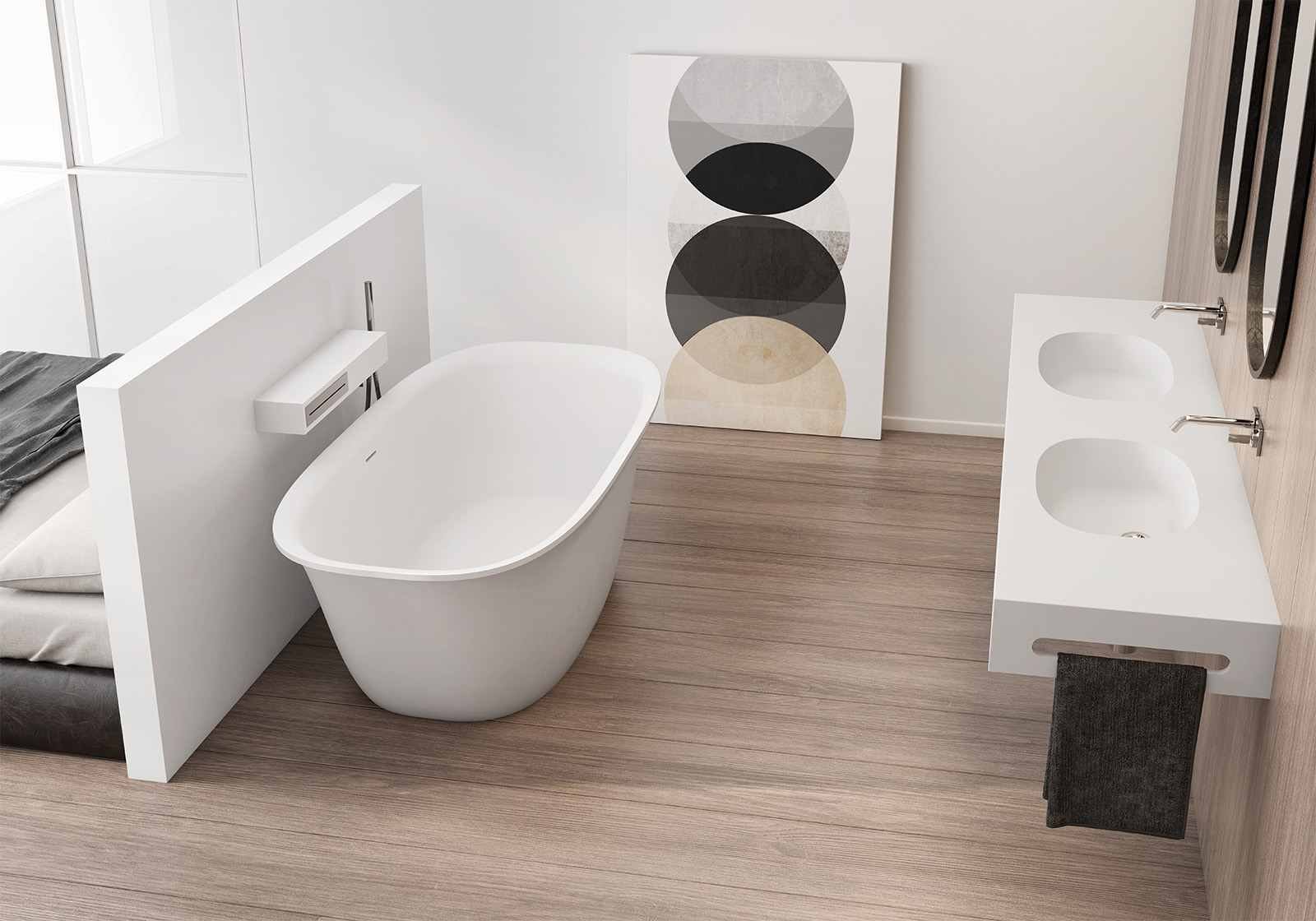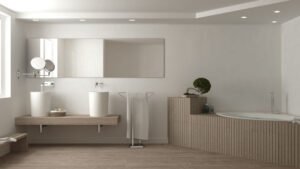Overflowing bathtubs may be an aesthetic choice for beach resorts, but you wouldn’t want that look in your bathroom.
First of all, it’s impractical. Secondly, most people just want to bathe and relax peacefully after a tiring day.
However, have you ever wondered how your tub magically holds the water despite its filled state? Read on as I discuss more about this feature and learn why are bathtub overflow drains necessary!
Are Bathtub Overflow Drains Necessary?
Having a bathtub overflow drain is optional and depends entirely on the homeowner.
It’s more of a personal preference that way. However, most people go the safer route and install overflow drains to prevent water spillage.
There are some cases, like with a few housing codes, where it is required to install overflow drains. However, no current law or plumbing code is enforcing the use of these fixtures.
What Is An Overflow Drain?
The overflow drain is that small opening you can find in most bathtubs and sinks. It is also called the ‘wastewater drain,’ and its purpose is to divert extra water towards the pipes.
Essentially, this is the thing you thank for when you forget you left the water running. You can find the overflow drain at the side of the tub, keeping the water from spilling outside.
As an additional purpose, you may also use the overflow drain to speed up the draining process. You can open it along with the floor drain to quickly remove water after your bath.
What are the Types of Overflow Drains?
Overflow drains are not that complicated. You can find two types in most baths: the traditional and integral overflows.
Traditional overflow drain
You can find a traditional overflow in old or vintage tubs. It is as simple as its name — a hole that is cut out along with the tub’s manufacturing process.
The traditional overflow is nothing fancy. It’s simply there to fulfill its purpose, but sometimes it can get complicated.
Since the hole is cut out and the drain pre-installed, you might have difficulty cleaning this overflow type. There’s no additional mechanism that can support you during the process.
Integral overflow drain
You will mostly find integral overflow drains on sinks, but you can also use them on tubs. This type is more common in modern bathtubs because of its various designs.
Most people choose integral overflows because of their aesthetics. You won’t have to bother yourself with the look of exposed pipes since you’ll have caps covering the entire assembly.
Integral overflow drains also have various types. You can identify which one suits you well by checking out the section below.
Different Overflow Assemblies
The overflow drain has one purpose — to drain water. There’s nothing much to consider about this fixture except its aesthetics and controls.
There are plenty of assemblies available for your bathtub overflow. Choosing the right one depends on your lifestyle, preferred look, and functionality.
Let’s check out a few of these examples below.
Cable drain
As its name implies, a cable drain uses a cable to either open or close the pop-up water stopper. It consists of the following:
- Control knob
- Stopper
- Cable
The overflow drain’s cable is connected to the knob and stopper’s lever mechanism. When you turn the knob clockwise, the mechanism is activated to close the overflow drain. Turn it counter-clockwise, then open the overflow drain.
Cable drains are common in modern tubs, and many homeowners prefer this assembly because of its practicality. You only need to be mindful of heavy-handed operation since the cable system is crucial to this type.
Trip lever drain
This assembly is very prominent in vintage bath tub designs and is often favored by elderly people. They are easy to operate and are more common than cable types.
You can find two types of trip lever drains available today: one with a pop-up stopper and one with a plunger.
The pop-up stopper variant is more complicated than its counterpart. It has plenty of metal pieces to complete the assembly and activate the stopper underneath.
Meanwhile, the plunger variant offers a more straightforward approach. The trip lever is connected to a rod that holds the plunger in place. When you activate the lever, the plunger drops, preventing water from leaving the tub. Deactivating the lever raises the plunger and drains water from a simple grate.
Here is a table comparing the parts of trip lever variants:
| Pop-Up | Plunger |
| Trip lever | Trip lever |
| Overflow plate | Overflow plate |
| Rod | Rod |
| Spring | Plunger |
| Rocker arm | Grate |
| Stopper |
Toe-tapper drain
A toe-tapper overflow might suit you if you’re having trouble bending over to reach for things.
This one is fairly easy to operate. You only need to search for that button on the bathroom floor with your feet. Simply press it with your toe, and the overflow drain will open or close.
The toe-tapper overflow is the second easiest assembly to use. However, you may have problems with functionality over time because of its push-button function. You must be mindful of its mechanism to easily maintain it.
Flip drain
The flip drain is the easiest overflow assembly to use as of today. You simply push one side with your finger to flip and open the stopper.
Push-pull drain
The push-pull assembly focuses more on the drain’s stopper. All you need to do is find the small metal rod holding it in place. You push down on it to close and pull it up to open the drain.
You’ll only need to worry about constant cleaning since dirt can clog up the stopper.
Closing Thoughts
So, are bathtub overflow drains necessary? It entirely depends on you, but we suggest you get one anyway.
Installing an overflow drain saves a lot of time because of the quicker draining process. Aside from that, it also keeps you safe from bathroom emergencies.
There are still traditional types in the market, but most people prefer integral overflows these days. They are far better in terms of design, functionality, and diversity. Make sure to choose the right one that suits your lifestyle best!




